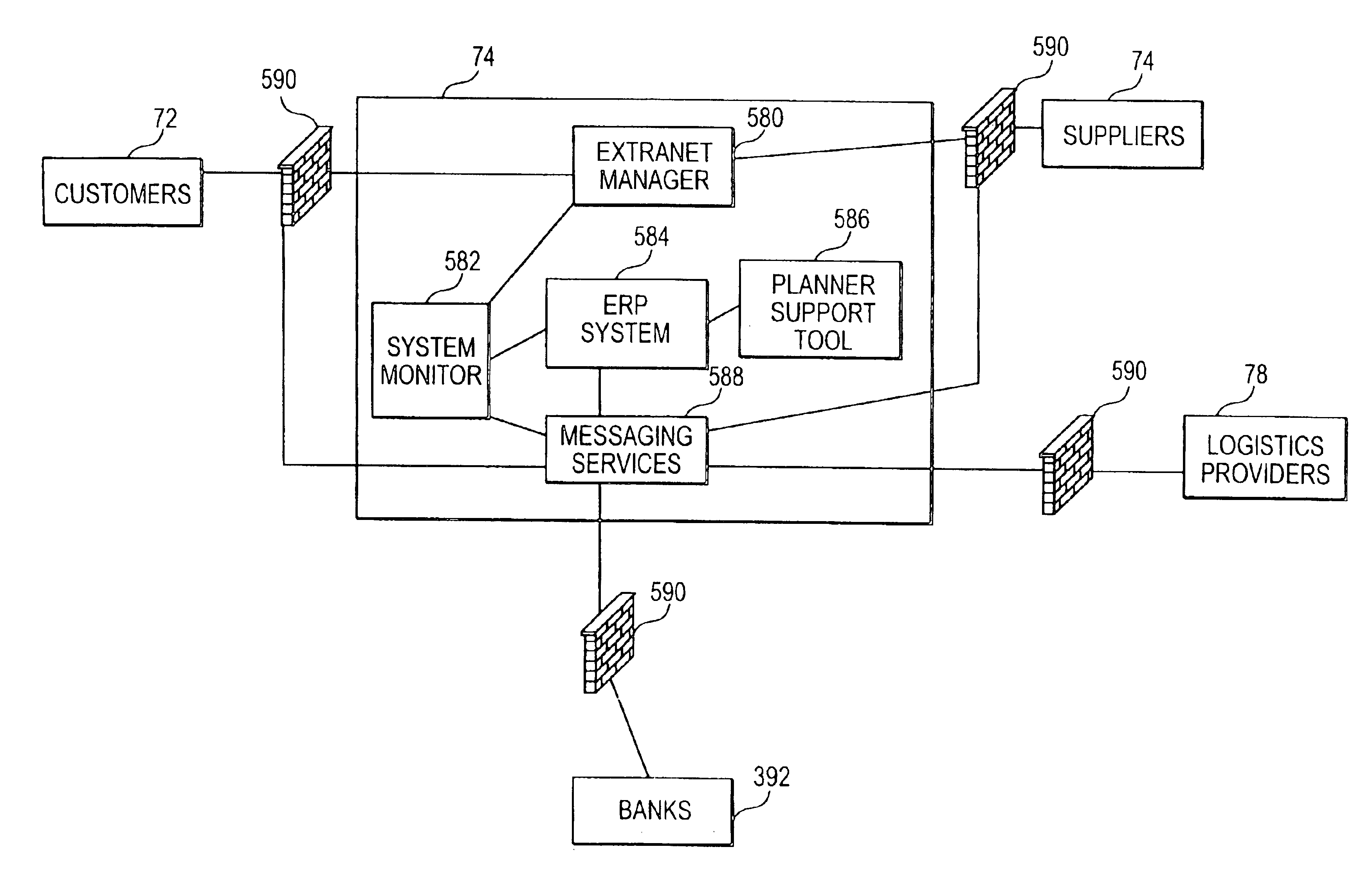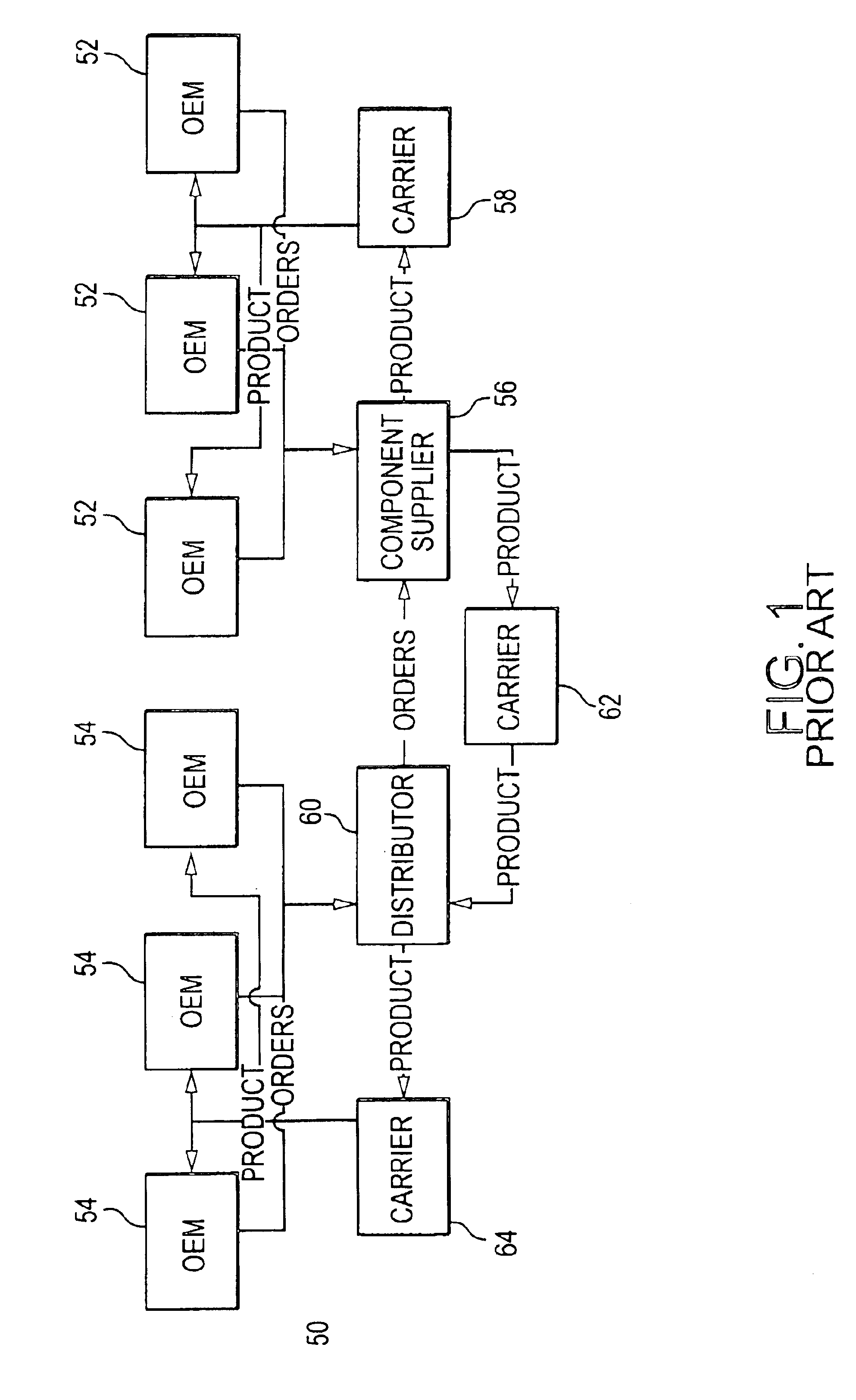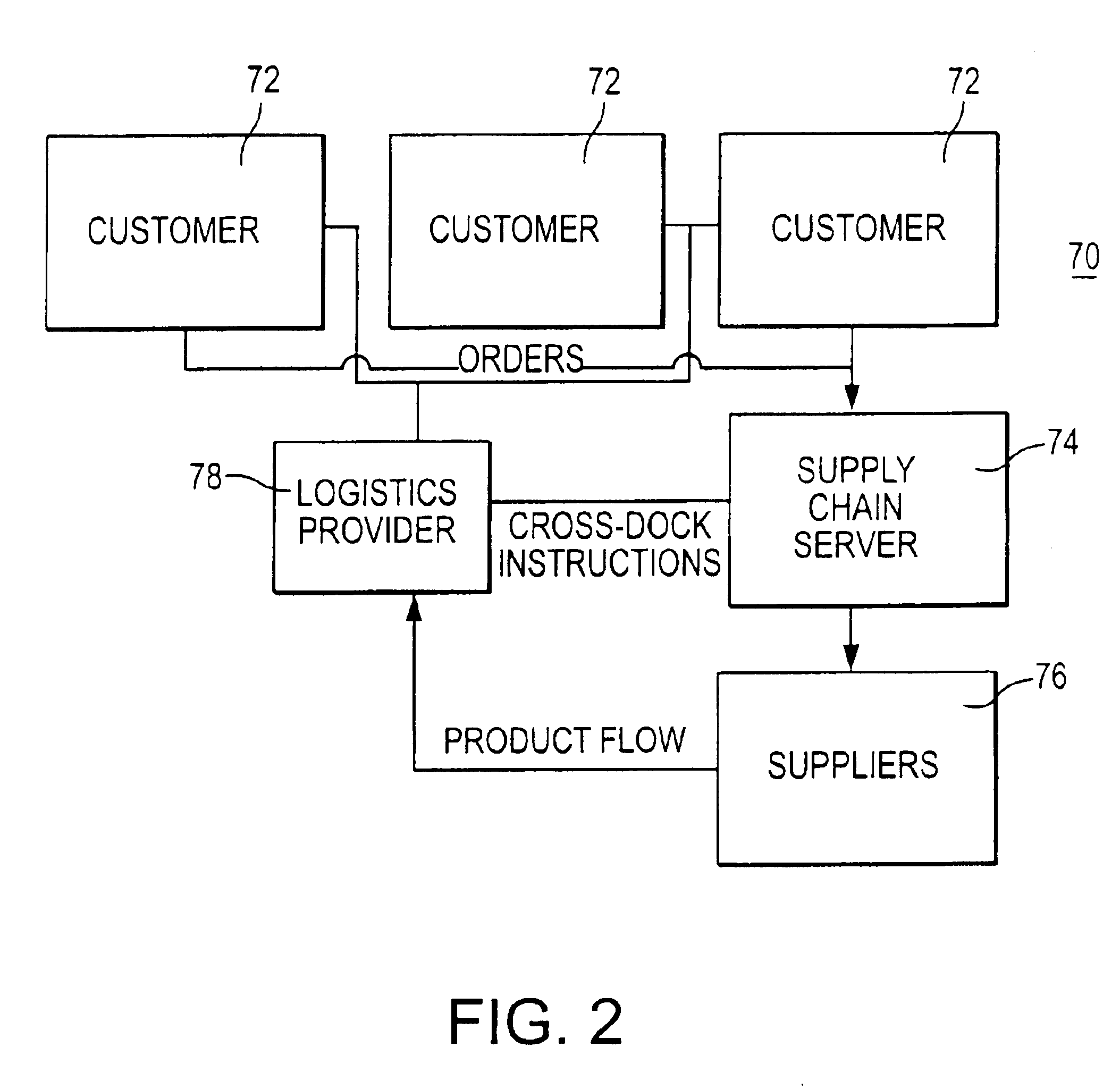Supply chain architecture
a supply chain and chain technology, applied in the field of supply chain networks, can solve the problems of slow moving inventories, inaccurate forecasting of needs, and high price, and achieve the effect of improving the supplier's accounting books
- Summary
- Abstract
- Description
- Claims
- Application Information
AI Technical Summary
Benefits of technology
Problems solved by technology
Method used
Image
Examples
Embodiment Construction
I. General Overview
[0048]In the following description, terms describing processes and hardware are used interchangeably as it should be clear that the functions described could be implemented using many different forms of hardware, software or even manually.
[0049]The invention creates a network which supports customers requesting the same or similar products. The customers using a supply chain network in accordance with the invention realize lower costs and increased flexibility even in changing supply demands. In one embodiment, the products received by customers are initially qualified by the customers first—in that the products can be extensively tested by a customer before the product is “qualified” or permitted in the customer's manufacturing process. Once the product is qualified, a defined set of interactions occur in a particular sequence and at designated times that permit the supply chain to be managed and well synchronized between customer and supplier. Such a well synchr...
PUM
 Login to View More
Login to View More Abstract
Description
Claims
Application Information
 Login to View More
Login to View More - R&D
- Intellectual Property
- Life Sciences
- Materials
- Tech Scout
- Unparalleled Data Quality
- Higher Quality Content
- 60% Fewer Hallucinations
Browse by: Latest US Patents, China's latest patents, Technical Efficacy Thesaurus, Application Domain, Technology Topic, Popular Technical Reports.
© 2025 PatSnap. All rights reserved.Legal|Privacy policy|Modern Slavery Act Transparency Statement|Sitemap|About US| Contact US: help@patsnap.com



